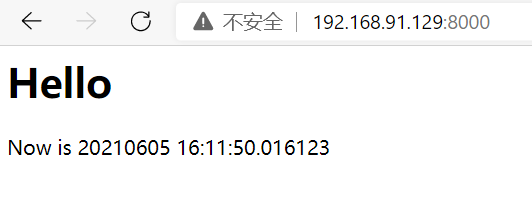muduo源码分析之HttpServer
2021-06-07 01:03
YPE html PUBLIC "-//W3C//DTD HTML 4.0 Transitional//EN" "http://www.w3.org/TR/REC-html40/loose.dtd">
标签:inf ted auto post 路径 浏览器 ext lin orm
相关文件
muduo/net/http/*
HttpRequst:http请求类
HttpResponse: http响应类
HttpContext: http协议解析类
HttpServer: http服务器类
作用
解析http请求,用户只需根据http请求类,设置好响应类,http服务器会把响应报文发给客户端(浏览器)。
先备知识
http请求
一个典型的http请求:
GET /hello HTTP/1.1\r\n
Host: 192.168.91.129:8000\r\n
Connection: keep-alive\r\n
Upgrade-Insecure-Requests: 1\r\n
User-Agent: Mozilla/5.0 (Windows NT 10.0; Win64; x64) AppleWebKit/537.36 (KHTML, like Gecko) Chrome/90.0.4430.212 Safari/537.36 Edg/90.0.818.62\r\n
Accept: text/html,application/xhtml+xml,application/xml;q=0.9,image/webp,image/apng,*/*;q=0.8,application/signed-exchange;v=b3;q=0.9\r\n
Accept-Encoding: gzip, deflate\r\n
Accept-Language: zh-CN,zh;q=0.9,en;q=0.8,en-GB;q=0.7,en-US;q=0.6\r\n
\r\n
请求报文有请求行line+请求头header+请求实体body。
上面第一行即请求行,下面的是请求头,没有body。
header和body之间有一空行。
请求行:
请求方法有Get, Post, Head, Put, Delete等
协议版本:1.0、1.1
请求头:
Accept:浏览器可接受的媒体(MIME)类型;
Accept-Language:浏览器所希望的语言种类
Accept-Encoding:浏览器能够解码的编码方法,如gzip,deflate等
User-Agent:告诉HTTP服务器, 客户端使用的操作系统和浏览器的名称和版本
Connection:表示是否需要持久连接,Keep-Alive表示长连接,close表示短连接
http应答
由状态行status line+响应头header+实体body组成
一个典型的http应答:
HTTP/1.1 200 OK
Content-Length: 112
Connection: Keep-Alive
Content-Type: text/html
Server: Muduo
This is title
Hello
Now is 20130611 02:14:31.518462
当然每行结尾都是有/r/n的,header和body之间有一空行。
第一行为状态行
1XX 提示信息 - 表示请求已被成功接收,继续处理
2XX 成功 - 表示请求已被成功接收,理解,接受
3XX 重定向 - 要完成请求必须进行更进一步的处理
4XX 客户端错误 - 请求有语法错误或请求无法实现
5XX 服务器端错误 - 服务器执行一个有效请求失败
使用
在muduo/net/http/tests中提供了使用示例
HttpServer_test.cc
#include "muduo/net/http/HttpServer.h"
#include "muduo/net/http/HttpRequest.h"
#include "muduo/net/http/HttpResponse.h"
#include "muduo/net/EventLoop.h"
#include "muduo/base/Logging.h"
#include
#include 编译运行该示例,即开启了一个http服务器
在浏览器地址栏输出ip地址+端口号+请求地址可访问
这里访问的是/地址,返回 "hello" +时间戳。
可使用wireshark抓包查看报文
HttpServer源码分析
muduo源码分析之HttpServer
标签:inf ted auto post 路径 浏览器 ext lin orm
原文地址:https://www.cnblogs.com/Lj-ming/p/14854332.html
文章标题:muduo源码分析之HttpServer
文章链接:http://soscw.com/index.php/essay/91518.html